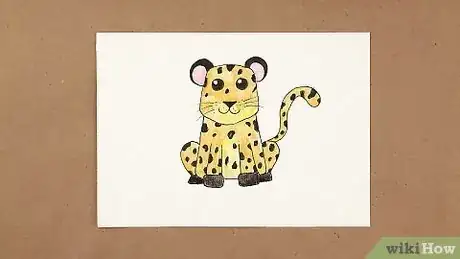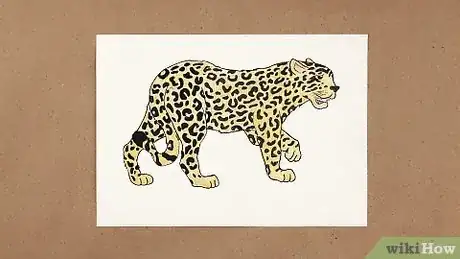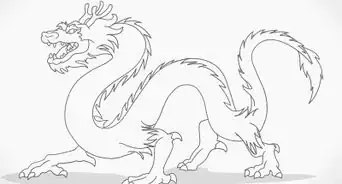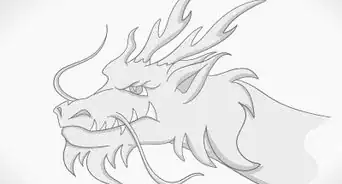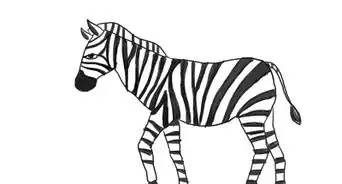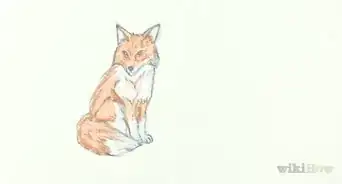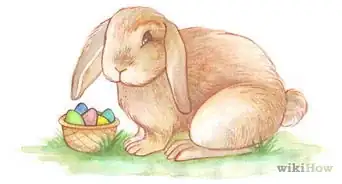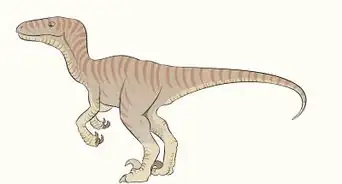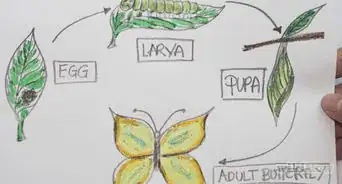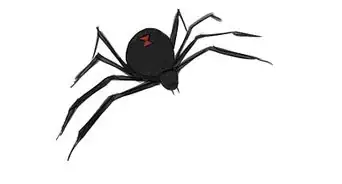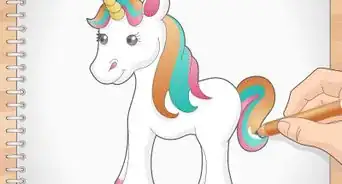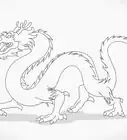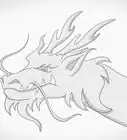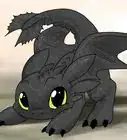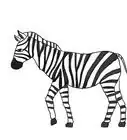This article was written by Kelly Medford and by wikiHow staff writer, Glenn Carreau. Kelly Medford is an American painter based in Rome, Italy. She studied classical painting, drawing and printmaking both in the U.S. and in Italy. She works primarily en plein air on the streets of Rome, and also travels for private international collectors on commission. She founded Sketching Rome Tours in 2012 where she teaches sketchbook journaling to visitors of Rome. Kelly is a graduate of the Florence Academy of Art.
There are 9 references cited in this article, which can be found at the bottom of the page.
This article has been viewed 3,322 times.
Jaguars are truly majestic cats, and they're also easy to draw! If you're looking to hone your drawing skills and capture the form of this beloved big cat on paper, you've come to the right place. Whether you're an avid cartoonist or prefer to use realism in your art, use this complete guide and learn how to draw a jaguar. We'll even give you handy tips on coloring the jaguar for that extra "wow" factor.
This article is based on an interview with our professional artist, Kelly Medford, founder of Sketching Rome Tours. Check out the full interview here.
Steps
How to Draw a Cartoon Jaguar
-
1Draw a wide 'U' shape for the bottom half of the head. At the top left and right of the 'U,' draw half-circles for the jaguar's ears. Finally, complete the outline of the jaguar's head by connecting the two ears with a line that curves up slightly in the middle; this is the top of the head.[1]
-
2Add an upside-down triangle for the jaguar's nose. Draw a horizontal line in the center of the head. Aim to have this line stretch roughly across a third of the head, although since it's a cartoon, you can make it as small or large as you want. Then, finish off the nose by drawing a "V" shape coming down from either end of the horizontal line.[2]
- Once the nose is drawn, shade it to look entirely black.
- Shade with cross-hatch marks, or turn your pencil on its side to get a more uniform shading.[3]
Advertisement -
3Place the jaguar's mouth directly below the nose. Start at the bottom of the nose, and draw a half-circle line that curves up to the left. Repeat the action with a second half-circle curving up and to the right. This gives your jaguar a cute smile![4]
-
4Draw circular eyes on either side of the head, above the nose. Make sure each eye is placed slightly to the left and right of the nose's position. Leave a space between the jaguar's eyes big enough to fit a third eye. Draw large circles inside each eye and shade them in; these are the jaguar's pupils.[5]
- You can change the placement of the pupils to make the jaguar look in different directions. To make it look straight ahead, place them in the center and high enough to touch the top of the eye.
-
5Add details like inner ears and whiskers. Draw inner ears as smaller half-circles inside the jaguar's ears. Then, sketch 3 whiskers on either side of the nose, extending past the sides of the head and arcing slightly to give them shape. You can make the whiskers as long as you like.[6]
-
6Sketch the jaguar's front legs and body to portray it sitting down. Start at either side of the head's base and draw two vertical lines down. Sketch two oval-shaped paws at the bottom of each line and then bring the lines back up to finish the front legs. Finally, draw a small horizontal line connecting the two paws to represent the jaguar's sitting body.[7]
- Remember that you won't have to define most of the body while drawing this position—just the legs.
-
7Add back legs that show the jaguar sitting on its haunches. Each back leg should be slightly taller, placed on either side of the jaguar's body. The top of each hind leg should look like a curving half-circle, leading into the rest of the leg and paws at the bottom. The jaguar's back paws should also be slightly higher than its front; this gives the illusion that its legs are further back in space.[8]
-
8Draw a curving line from the lower half of the jaguar's body. Add a half-circle at the end, and another curving line to close the tail. Shade the tip of the tail in with your pen or pencil so that it's dark. Shade in two thick horizontal bands next to the end of the tail, too.[9]
-
9Cover your jaguar's body and head in spots and shade them. As it's a cartoon, you can make these spots as big or as little as you want. Generally, place larger spots on the jaguar's body and legs and smaller spots on its forehead. Leave the lower half of the jaguar's head mostly spotless.[10]
- Once the spots are in place, fill them in (if applicable) to make them look dark.
-
10Color in your newly-sketched cartoon if you want to. The spots, nose, and eye pupils should be shaded black by now. Shade most of your jaguar's body and head with a tawny yellow color. Choose a lighter cream color for its stomach and mouth and pale pink for its inner ears.[11]
How to Draw a Realistic Jaguar
-
1Draw circles to outline the jaguar's chest and rear. First, make a large circle for the jaguar's chest. Leave a gap about half as wide as that circle and draw a smaller circle to the left representing the jaguar's rear. Then, make two even smaller circles: one overlapping the chest and the other overlapping the rear to represent the jaguar's shoulder and hip.[12]
-
2Sketch angled vertical lines for the front and back legs. These lines provide an outline of the jaguar's legs that you can use to draw them accurately later. The front lines should be straight and angled slightly right, while the back lines should angle slightly left, then curve right.[13]
- If you need some extra guidance in drawing the jaguar's limbs accurately, draw small circles where each joint would be in the jaguar's legs—one over each knee and one where the leg meets the paw.
-
3Make another circle to outline the jaguar's head. Position this to the right and above the body circle. Separate the head into four quadrants by sketching a horizontal and vertical line through its center. This will help you accurately position all of the jaguar's facial features. Once you have your quadrants, draw a half-oval curve in the top left quadrant. This is the outline of the jaguar's ear.[14]
- The far right side of the circle will become the muzzle of the jaguar. The left end will merge into the jaguar's neck.
-
4Connect the circles with curving lines to outline the body and tail. Draw one line across the top of each circle to connect the rear, chest, and head, matching the shape of a jaguar's body. Add a second line underneath each circle, connecting them to form the underside of the jaguar's body and neck. Starting from the top of the rear circle, draw a tail line that curves out.[15]
- When drawing the body outline, remember that jaguars generally have a sloping back and round body.
- Use a reference photo of a real jaguar for accuracy. There's no shame in studying a reference as you work—it helps you improve, and Da Vinci himself recommended the practice![16]
-
5Draw an upside-down triangle for the nose and a half-circle for an eye. Sketch the jaguar's nose on the far right of the head, just above its horizontal line. In the top-right quadrant, draw the bottom of the eye and then add a slightly curved horizontal line over the top of it to complete the shape. Make another smaller half-circle inside the eye to create the jaguar's pupil and shade it in.[17]
-
6Sketch the jaguar's muzzle and whiskers. Start drawing at the bottom of the nose, moving your pencil down and then to the left. Draw until you hit the left edge of the head circle; the line should connect with the earlier line you drew for the jaguar's neck. Sketch a curving line from the top of the nose to form the jaguar's forehead. Then, make a handful of dots below the nose, and draw several whiskers stretching past the jaguar's face.[18]
- Use short, jagged strokes on the jaguar's chin and muzzle to make them appear fuzzy.
-
7Add definition to the jaguar's head and ears. You have the outline of the ears; now, go back over them with a stronger line and short, jagged strokes to make them furry. Draw a curving line between the ears and connect it with the jaguar's neck to form the top of the head.[19]
- Refer again to a reference photo to ensure the jaguar's neck is the right thickness.
- Overall, this big cat is stocky and muscular; its head and neck may seem a bit big, but this is because it has such powerful jaws.
-
8Draw the jaguar's legs, adding a few rough strokes to make them furry. Begin with the front leg; draw from the smaller shoulder circle you made and outline each leg, using overlapping curved lines to sketch the jaguar's paw and toes. Do the same for the rear leg, drawing from the hip circle to create a leg and paw. Once you have the forelegs, draw the far legs on the other side of the jaguar's body.[20]
- Make sure the jaguar's belly separates each set of legs, so your drawing looks realistic.
- When detailing the legs, keep in mind that a jaguar's legs are usually short and muscular in appearance.
-
9Define the shape of the jaguar's body and tail. Create a bolder line over the top of your previous outline, this time adding short, jagged strokes here and there to represent fur. Ensure that the jaguar's neck, chest, legs, rear, and tail are finally connected.[21]
- A jaguar's tail is short compared to other big cats. Make sure the tail is no longer than the cat's back legs.
-
10Fill in the jaguar's coat with irregular spots known as rosettes. These rosettes are generally close together, bigger on the jaguar's body and smaller on its head. Draw heavy clusters on the back, neck, legs, and tail, lighter clusters on the underside of the jaguar, and smaller clusters on the jaguar's head.[22]
- Rosettes don't usually have sharp angles or points.
- Leave the jaguar's nose and muzzle free of rosettes. If you look at a jaguar picture, you'll notice that its snout is usually not spotted.
-
11Color and shade the jaguar if you'd like to. A jaguar's base color is tawny yellow. Each rosette has thick, cracked black splotches around the outside, tan-brown coloring in the middle, and smaller black speckles near the center. The jaguar's lower body, including its belly, chin, and the underside of its neck, paws, and tail, are all white.[23]
- Colored pencils are a great way to give your drawing color and add careful details like shading the fur and a blended gradient from the tawny yellow base coast into the white lower body.[24]
- Once the color is added, your jaguar is all done and ready to show off!
References
- ↑ https://www.drawingtutorials101.com/how-to-draw-a-jaguar-for-kids
- ↑ https://youtu.be/LXoRbKozTnI?t=35
- ↑ Kelly Medford. Professional Artist. Expert Interview. 10 March 2021.
- ↑ https://youtu.be/LXoRbKozTnI?t=38
- ↑ https://www.drawingtutorials101.com/how-to-draw-a-jaguar-for-kids-step-by-step
- ↑ https://youtu.be/LXoRbKozTnI?t=44
- ↑ https://www.drawingtutorials101.com/how-to-draw-a-jaguar-for-kids-step-by-step
- ↑ https://www.drawingtutorials101.com/how-to-draw-a-jaguar-for-kids-step-by-step
- ↑ https://www.drawingtutorials101.com/how-to-draw-a-jaguar-for-kids-step-by-step
- ↑ https://www.drawingtutorials101.com/how-to-draw-a-jaguar-for-kids-step-by-step
- ↑ https://www.drawingtutorials101.com/how-to-draw-a-jaguar-for-kids-step-by-step
- ↑ https://design.tutsplus.com/articles/how-to-draw-animals-big-cats-their-anatomy-and-patterns-part-2--vector-20399
- ↑ https://design.tutsplus.com/articles/how-to-draw-animals-big-cats-their-anatomy-and-patterns-part-2--vector-20399
- ↑ https://easydrawingguides.com/how-to-draw-a-jaguar/
- ↑ https://easydrawingguides.com/how-to-draw-a-jaguar/
- ↑ Kelly Medford. Professional Artist. Expert Interview. 10 March 2021.
- ↑ https://easydrawingguides.com/how-to-draw-a-jaguar/
- ↑ https://easydrawingguides.com/how-to-draw-a-jaguar/
- ↑ https://easydrawingguides.com/how-to-draw-a-jaguar/
- ↑ https://easydrawingguides.com/how-to-draw-a-jaguar/
- ↑ https://easydrawingguides.com/how-to-draw-a-jaguar/
- ↑ https://design.tutsplus.com/articles/how-to-draw-animals-big-cats-their-anatomy-and-patterns-part-2--vector-20399
- ↑ https://design.tutsplus.com/articles/how-to-draw-animals-big-cats-their-anatomy-and-patterns-part-2--vector-20399
- ↑ Kelly Medford. Professional Artist. Expert Interview. 10 March 2021.

